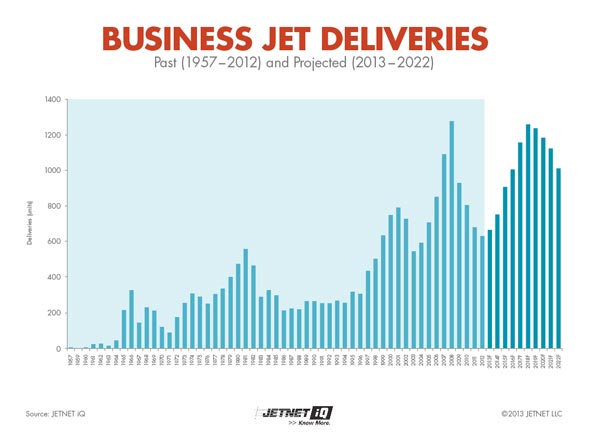10 Ways to Grow Marketshare
04.17.13 · Sonia Greteman
In aviation, when things get tough, leaders don’t retreat. They advance. Consider Bombardier’s extensive and seemingly ever-growing Learjet, Challenger and Global product lines. Their innovation and investment reinforce that the business of aviation is a long game requiring courage, patience and resources. Over the years, recession or no, Bombardier has continued developing compelling new product offerings – and telling the world about them.
Marketing Matters
We applaud Bombardier, Embraer, Signature and other likeminded, forge-ahead leaders. Delivering more even in challenging times. Standing strong with their marketing, suppressing the almost instinctual knee-jerk reaction to slash budgets. After all, it just makes sense that if less income is coming in, you can offset that by diverting marketing dollars. Right? Wrong.
1. Stay Close
I’m biased, but I’m also on the front lines. I’ve been in aviation marketing for almost 25 years and have seen what happens. Shortsighted thinking generates short-lived gains. Think of the message it sends when you stop communicating and reaching out to your customers at the very time they need to hear from you most. (That extends to internal communications, too. Your team needs to hear from you. To know what to expect.)

2. Give It Time
Tough times drive customers to give more thought to purchases. They grow more conservative and selective. This means they need to hear from you more, not less. They’re looking for value, new ideas and new ways to do business with you. They also prefer to do business with people they know and trust. Relationships take nurturing and time. People need to see your value-proposition m
3.Spend Like Your Sales Depend On It
Most determine their marketing budgets as a percentage of revenue. The CMO Council notes that B2C companies typically allocate 17 percent to marketing and B2B, 11 percent. Those launching a new product/service or moving into a new market/region often increase their marketing-to-revenue ratio to 20 percent or more.

4. Accelerate While Others Let Up
As others ramp down, a solid forward-thinking strategy would be to ramp up. Numerous studies support this advice. Standing strong during a downturn – increasing rather than cutting back on your marketing investment – can stimulate sales, profits and growth.
5. Focus on the Top
It’s not uncommon for the top 20 percent of your customers to generate 80 percent of your business. Put your efforts here. You can refine even more by narrowing your focus to the top 5 percent of your customers, which may account for 50 percent of your profits. Market to your existing top customers and others like them. Don’t worry about the rest. Your bottom customers probably cost you money, so the last thing you need is more of their (and similar) business.
6. Arm Your Sales Team
Consider putting all your collateral and product information in a handy, at-your-fingertips format. Last year, FlightSafety International created an iPad-optimized Resource and Information Center for its sales directors. Now with the swipe of a finger, they can call up everything from training program details and interactive maps to videos and photo galleries. It’s working beautifully in the field.
7. Retool Your Media
As the faint of heart withdraw their marketing resources, this means opportunity for you. Their diminished presence opens up more room for you. It’s like a crowded event when half the attendees go home. You can be more easily seen and heard. Plus, your marketing budget goes farther in a downturn. Media channels (both print and online publications) are more willing to make you a deal and deliver added value. That includes promotions and discounts today, but also tomorrow as you lock in favorable long-term media rates. Consider new media and digital channels you may have overlooked before.

8. Mix Things Up
Make all your marketing channels work for you – earned as well as paid media. Deploy a diverse marketing mix. Visit customers face-to-face. Keep your website updated with easy-to-find contact names and phone numbers. Optimize your site for search engines by using unique title tags, H1 (main headline) tags and permalinks. Provide thought leadership by being a source for reporters/editors, speaking at industry events and self-publishing (blogs, video, newsletters). Send mailers. Leverage digital channels: email, social media, mobile, eblasts, enewsletters.
9. Get Social
Think Twitter for real-time event posts, Facebook for sharing your corporate culture and LinkedIn for business development. We especially like LinkedIn for B2B. It provides a platform for telling your story, starting a conversation about a hot industry topic, posting what’s new, and engaging with current/prospective customers. Status updates encourage word of mouth. Authentic recommendations build trust and help others see you as someone they want to do business with. A premium account lets you conduct more advanced searches with access to full profiles, and dive deeper into analytics (who visits your site, what attracts them, what they do when they’re there). InMail provides a guaranteed, highly credible means of connecting with any of LinkedIn’s 200-plus million users.
10. Be Consistent
Stick with a disciplined, methodical marketing plan. One that preserves and perhaps even increases your marketing budget. The old axiom is true. It takes money to make money. Marketing can be your best investment. Especially when the economy is less than robust.
*Originally published in BlueSky Business Aviation News on April 17, 2013.
